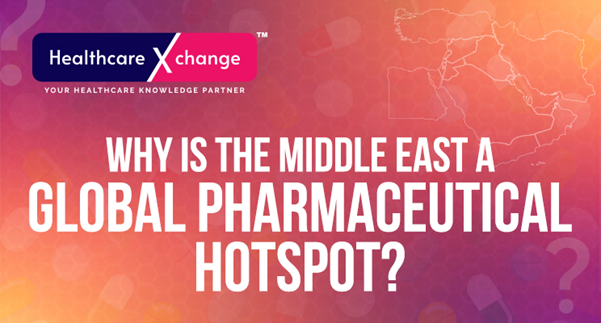
What makes the Middle East a Hotspot on the Global Pharmaceutical Landscape?
- Healthcare and General Service
- October 15, 2024
Highlights
-
Pharmaceutical giants seek to establish manufacturing and research facilities in the Middle East to cater to the global market
-
Government initiatives like the Saudi Vision 2030 aim for technology transfer and self-sufficiency to transform the Middle East into a regional pharma hub
Multinational pharmaceutical companies such as Sanofi, Novartis, Pfizer, and GlaxoSmithKline (GSK) have made significant strides into the Middle East. The primary markets for these pharmaceutical giants are Qatar, the United Arab Emirates (UAE), Kuwait, and the Kingdom of Saudi Arabia (KSA). The main focus for big pharma in the region is the integration of healthcare technology with new developments in the industry.
Key market segments for growth:
-
Genomics
-
Personalised medicine
-
Rare diseases
-
Drug discovery
-
Anti-aging and wellness
On a regional level, the GCC (Gulf Cooperation Council) has enacted several laws to facilitate investment in pharmaceutical facilities. The legislation aims for easy transfer of knowledge to boost self-reliance.
Let’s delve into the UAE and Saudi Arabian markets to understand why the region has emerged as a global pharma hub.
The UAE’s ascendance as a pharmaceutical hub
The local industry is driven by substantial government investment and public-private partnerships.
-
The UAE recently expanded the Jebel Ali Free Zone (Jafza) to attract more investment from major industry players
-
Jafza is already home to the regional headquarters of multinational brands such as Roche, Sanofi, Johnson & Johnson, and GSK. Under a memorandum of understanding with the UAE’s health ministry, the free zone is set to be a manufacturing centre
-
The UAE’s strategic position has enabled it to export pharmaceutical goods to 48 countries spread across the Middle East, Africa, as well as South Asia
Key Statistics:
-
Facilities surged from four in the previous decade to 23 at present
-
Market size is expected to more than triple to USD 4.7 billion in 2025 from USD 1.5 billion in 2011
-
The UAE’s pharmaceutical capacity expanded to produce 2,500 medicines, active ingredients and finished products
-
Exports are projected to expand to USD 297 million by 2025, a rise of 18 percent from USD 251 million in 2020
Partnerships:
-
Abu Dhabi’s health department collaborated with US companies Eli Lilly and AbbVie Biopharmaceutical in 2023
-
Anglo-Swedish MNC AstraZeneca opened its office in Dubai Science Park
-
British diagnostics company Virax Biolabs established its base at the same location
The Saudi Vision
Saudi Arabia has undertaken strategic initiatives to position itself as a dominant pharmaceutical force within the region. Recently, the country mandated companies to establish regional headquarters locally to qualify for government contracts.
The nation’s demographics and ambitious initiatives, notably the “Vision 2030” program, are anticipated to propel the pharmaceuticals sector forward.
Key Statistics:
-
Saudi Arabia accounts for a 30% share of the overall market in the Middle East
-
It hosts approximately 50 locally registered pharmaceutical manufacturers, or 42% of the region’s total capacity
-
The pharmaceuticals market totaled USD 9 billion in 2023. The industry is likely to achieve a compound annual growth rate (CAGR) of 2.5% to attain a size of USD 11.5 billion in 2032
Partnerships:
-
French pharmaceutical company Sanofi collaborated with local entities Lifera and Arabio to produce seven crucial vaccines in 2023
-
The Saudi Ministry of Investment (MISA) joined forces with Novartis in 2022 for research in the cell and gene therapy segment. Novartis’ contribution is expected to boost the country’s GDP by USD 857 million in 2024
-
MISA partnered with GSK to enhance research in healthcare and life science
The Middle East is rapidly emerging as a prominent pharma hub, driven by the pursuit of self-sufficiency in medicines and collaborative efforts across the region.




